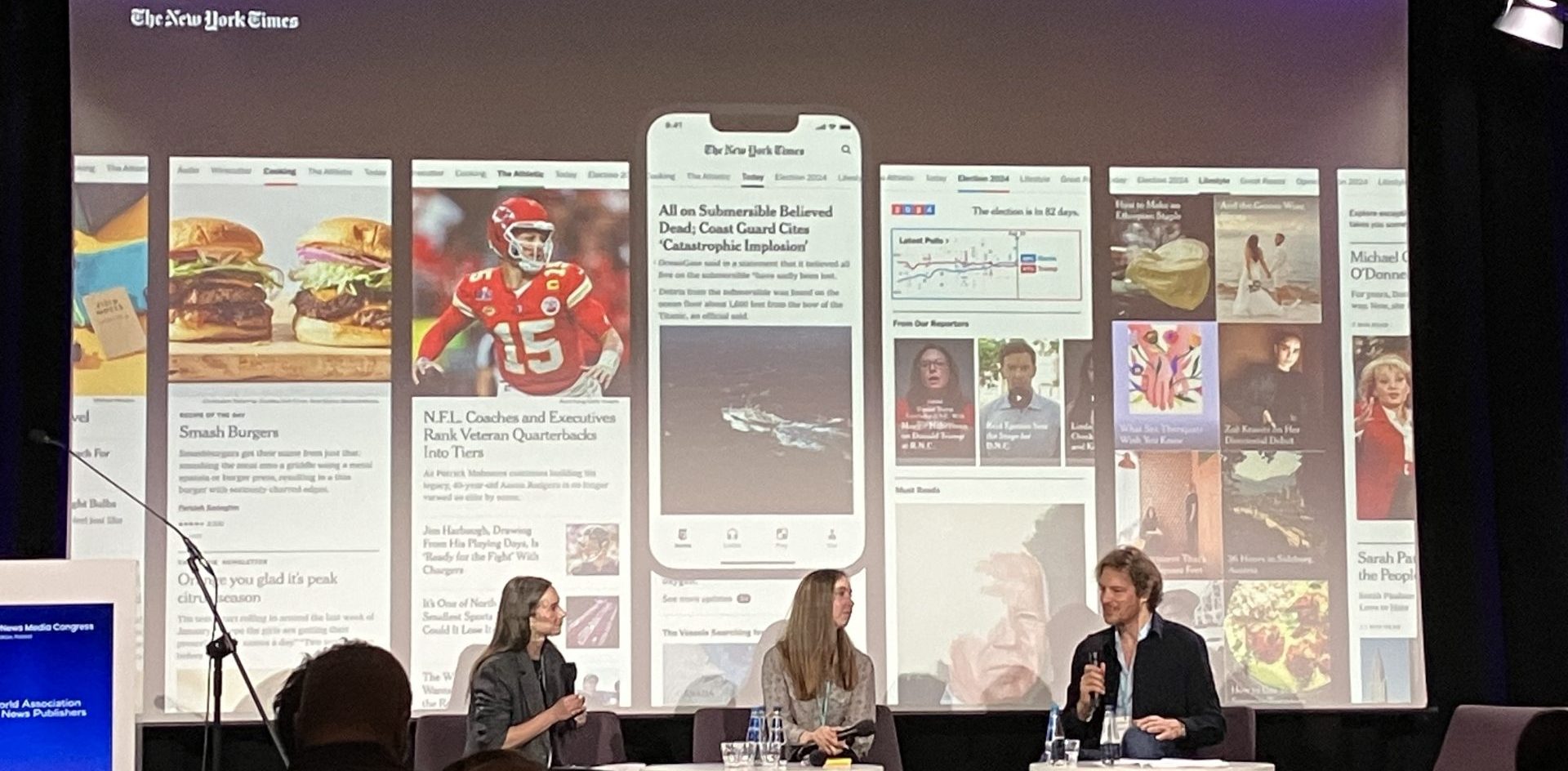
Newsletter
Newsletter
Multi-dimensional personas are being used to improve media product development and could be used to improve AI recommendations.
16th February 2023

In the Pugpig weekly media bulletin, Pugpig’s consulting services director Kevin Anderson distills some of the best strategies and tactics that are driving growth in audiences, revenue and innovation at media businesses around the world.
Retention is a theme that we’ll be covering in depth this year, both here in the Media Bulletin as well as in-depth research that we’ll be conducting to support your success. Better News, a project of the American Press Institute and the Knight-Lenfest Local News Transformation Fund, highlighted a case study from the Detroit Free Press about how the newsroom explored how it could “positively affect retention”. Editors wanted to know what they and the journalists they managed could do, apart from simply producing great journalism, to help retain their subscribers since introducing a digital subscription offering in August 2020.
Sign up to get the Media Bulletin in your inbox.
The project is part of the US Tables Stakes initiative, which teaches news leaders change management skills so that they can develop new products and new business models for local news. The project is based on seven key concepts – the table stakes, and the Detroit Free Press project was based on the fourth concept: the goal of “funnel(ing) occasional users to habitual and paying loyalists”. The Free Press or the Freep, as it’s known locally, chose to focus on set of subscribers to test different tactics that could be used to increase retention.
They decided to focus on readers who followed the Major League Baseball team, the Tigers, during spring training. They built this cohort by analysing readers who had read the coverage and then bought a subscription, and they built a 600-person audience segment by connecting anonymous Google Analytics IDs to their subscriber data. They first bucketed this cohort into groups based on engagement: high engagement, likely to become highly engaged and zombies, those readers with little engagement. They then looked for common behaviours in these loyalty buckets. There might be mother who is a basketball fan but who is also interested in education. Or there might be an American football fan who is looking for things to do on the weekend. They gave these multi-dimensional personas the names of famous local baseball players so that they could remember them more easily. And they created analytics baselines and KPIs based on these cohorts such as daily page views, sessions and newsletter subscriptions. As we’ve talked about in the Media Bulletin before, in addition to relying on this quantitative data, they also added qualitative data by surveying some of the readers in the cohort so that could understand how to serve them better.
Armed with research, they then developed tactics such as non-sports related links in sports coverage and newsletter promotion to see what efforts supported retention. In addition to learning how to create such multi-dimensional audience segments and personas, the work also allowed them to test and challenge certain hypotheses. They began the experiment with the assumption that sports fans came for sports stories but weren’t interested in other topics, but their research disproved that assumption. With non-sports links in sports stories, they saw a 17% increase in page views per session by this cohort during the experiment. Breaking news and politics stories were particularly popular amongst the group. And while readers were also interested in entertainment, it wasn’t as much of an area of interest as politics, which also surprised the editors.
They also found that few people in the group were subscribed to their newsletters and that it was a challenge to get highly engaged readers, those who read 4-6 stories a day, to read more. Instead of focusing on trying to engage their most loyal readers even more, they instead focused on those who were more lightly engaged, particularly trying to get them to subscribe to their newsletters.
What’s really interesting is that after building these multi-dimensional personas that they became interested in knowing even more about their audience so that in the future they hoped to add location, income, education, race and age data to the profiles in their cohort. The experiment increased the curiosity of newsrooms leaders on how they could use data and personas to deliver on the company’s subscription strategy. Result!
As we have found, many publishers are looking to personalisation as part of their subscription or membership optimisation efforts. If the goal is loyalty and habit supporting conversion and retention, the thinking is that by surfacing more relevant content that the reader will perceive more value and subscribe and keep that subscription. Just as personas can be used to understand the interests of audience segments, they are also being used to increase the effectiveness of recommendation systems, including by building models that allow users to fine-tune recommendations.
Peter Houston with What’s New in Publishing highlighted research into improving the accuracy and transparency of AI recommendation systems. It’s important because as we’ve seen with some AI experiments, such as the one that CNet did, transparency is important. They did engage in transparency but somewhat after the fact, which led to some reputational damage.
The research offered up three personas so that a user might adjust the recommendations that they were getting, which is really interesting. Instead of letting the AI make all of the decisions, the research was trying to give audiences some agency. The research by Belgian University, Katholieke Universiteit Leuven, created three personas for users to choose based on their “moods and needs”. Peter described them like this:
The research is an interesting mix of user needs concepts and AI because they co-designed these personas “by inductively discerning core news reading motivations and relevant features”. The researchers hope that publishers will embrace this work so that audiences have choices rather than simply being delivered recommendations by AI.
And on that note, Peter has a few thoughts about applying the research. He believes that some personas might be more relevant for different types of publications and content. Readers of an evening paper like LlÉdition du Soir might be more of unwinders, while readers of niche publications might be looking for an expert persona. Personally, I’d brand these news mixes as things like Deep Diver, The Contrarian and, well, The Unwinder. I might also add the Quick Snacker, when I want a fast update. We see this activity with news apps in the morning when people want that quick update.
Using this lens, I can see something like this being useful for an aggregator app or service. While a standard AI recommendation engine might serve up content from a range of sources that I traditionally read, I could switch to a challenger, contrarian persona to see coverage and points of view that provide “alternative viewpoints” from the sources that I regularly read.
Whether it is exploring personalisation or adding multi-dimensional personas to your analytics on Pugpig apps or sites, Pugpig Consulting Services is here to help you develop and deliver your strategy. Contact us at info@pugpig.com.
Here are some of the most important headlines about the business of news and publishing as well as strategies and tactics in product management, analytics and audience engagement.

Newsletter

Newsletter

Newsletter

Newsletter

Newsletter